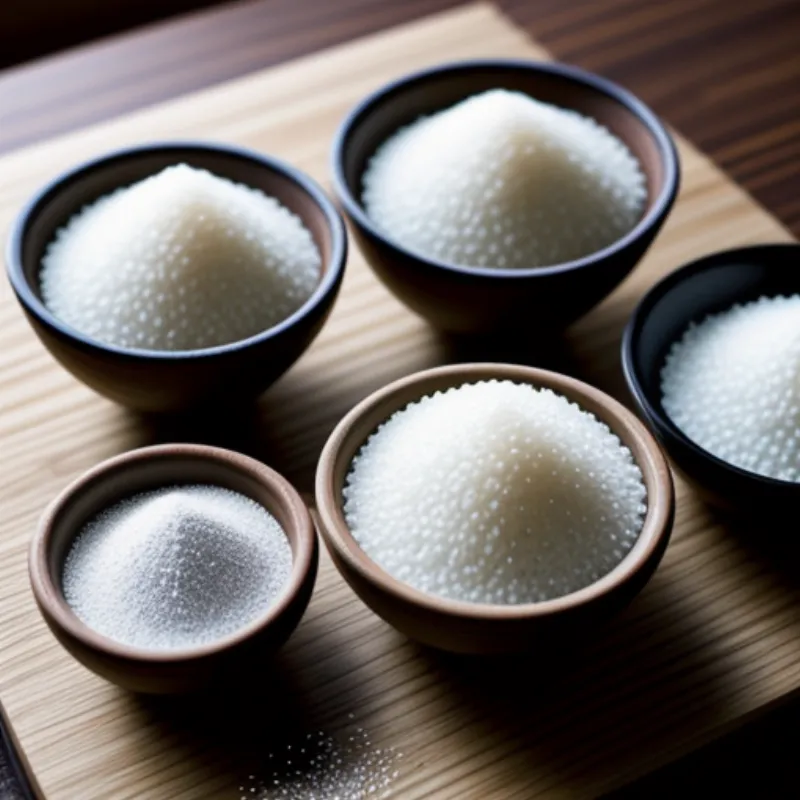Sawine, also known as sweet fermented rice, is a beloved Vietnamese dessert that is perfect for a hot day. This refreshing treat features a unique combination of sweet, tangy, and slightly fermented flavors that will tantalize your taste buds. With its simple ingredients and easy-to-follow instructions, making sawine at home is a breeze, even for busy individuals. Let’s dive in and learn how to create this delightful Vietnamese delicacy!
Ingredients You’ll Need:
To embark on this culinary adventure, gather the following ingredients:
- 2 cups glutinous rice (also known as sweet rice)
- 1/2 cup cooked white rice, cooled to room temperature
- 1 (1/4-ounce) packet of dried yeast (about 2 1/4 teaspoons)
- 1/2 cup sugar, or to taste
- 4 cups water
- Pinch of salt
Optional Garnishes:
- Toasted sesame seeds
- Chopped peanuts
- Shredded coconut
- Fresh mint leaves
Equipment for the Task:
- Large bowl
- Fine-mesh sieve
- Pot
- Cheesecloth
- Storage container
Step-by-Step Guide to Making Sawine:
1. Prepare the Rice:
- Rinse the glutinous rice under cold water until the water runs clear. This step removes excess starch and ensures a fluffier texture.
- Soak the rinsed rice in a large bowl filled with water for at least 4 hours, or preferably overnight. Soaking softens the rice grains and prepares them for fermentation.
2. Cook the Rice:
- After soaking, drain the rice thoroughly using a fine-mesh sieve.
- Transfer the drained rice to a pot and add 4 cups of water.
- Bring the mixture to a boil over medium heat, then reduce the heat to low, cover the pot, and simmer for about 20 minutes, or until the rice is tender and cooked through.
3. Mix in the Yeast and Sugar:
- While the rice is cooking, dissolve the dried yeast in 1/4 cup of warm water. Let it stand for about 5 minutes, or until the yeast is foamy.
- Once the rice is cooked, spread it out on a clean surface to cool slightly.
- Transfer the cooled rice to a large bowl and add the cooled cooked white rice, dissolved yeast mixture, and sugar. Mix well to combine.
4. Ferment the Sawine:
- Line a storage container with cheesecloth, ensuring there is enough overhang to cover the rice mixture later.
- Transfer the rice mixture into the cheesecloth-lined container and spread it evenly.
- Fold the cheesecloth over the rice mixture, creating a secure wrap.
- Cover the container with a lid and let it ferment in a warm place for 2-3 days, or until the sawine develops a slightly tangy aroma and a slightly liquid consistency.
5. Serve and Enjoy:
- Once the sawine is fermented to your liking, it’s ready to be enjoyed!
- To serve, spoon the desired amount of sawine into bowls.
- Add your favorite garnishes, such as toasted sesame seeds, chopped peanuts, shredded coconut, or fresh mint leaves.
- You can also add a splash of coconut milk or a drizzle of honey for extra sweetness.
Tips for the Best Sawine:
- Quality Rice: Use high-quality glutinous rice for the best texture and flavor.
- Yeast Activation: Ensure the yeast is active by proofing it in warm water before adding it to the rice mixture.
- Fermentation Time: The fermentation time can vary depending on the room temperature. If you prefer a more sour taste, ferment for a longer period.
- Storage: Store leftover sawine in an airtight container in the refrigerator for up to 3 days.
FAQs about Making Sawine:
Q: Can I use instant yeast instead of dried yeast?
A: While dried yeast is recommended for this recipe, you can substitute it with an equal amount of instant yeast.
Q: How do I know if the sawine is fermented properly?
A: Fermented sawine will have a slightly tangy aroma and a slightly liquid consistency. You can also taste a small amount to check for the desired level of sourness.
Q: Can I make sawine without cheesecloth?
A: Cheesecloth helps to absorb excess moisture during fermentation. If you don’t have cheesecloth, you can line the container with a clean kitchen towel instead.
 Ingredients for Vietnamese Sawine
Ingredients for Vietnamese Sawine
 Fermenting Sawine in a Container
Fermenting Sawine in a Container
There you have it—your comprehensive guide to making delicious and refreshing sawine at home. With simple ingredients and easy-to-follow steps, you’ll be able to impress your loved ones with this Vietnamese culinary gem. So go ahead, gather your ingredients, and embark on this sweet and tangy adventure!
Don’t forget to share your experience and photos of your homemade sawine in the comments below. We’d love to see your culinary creations! If you’re looking for more exciting and easy-to-follow recipes, be sure to explore the rest of our website. Happy cooking!
